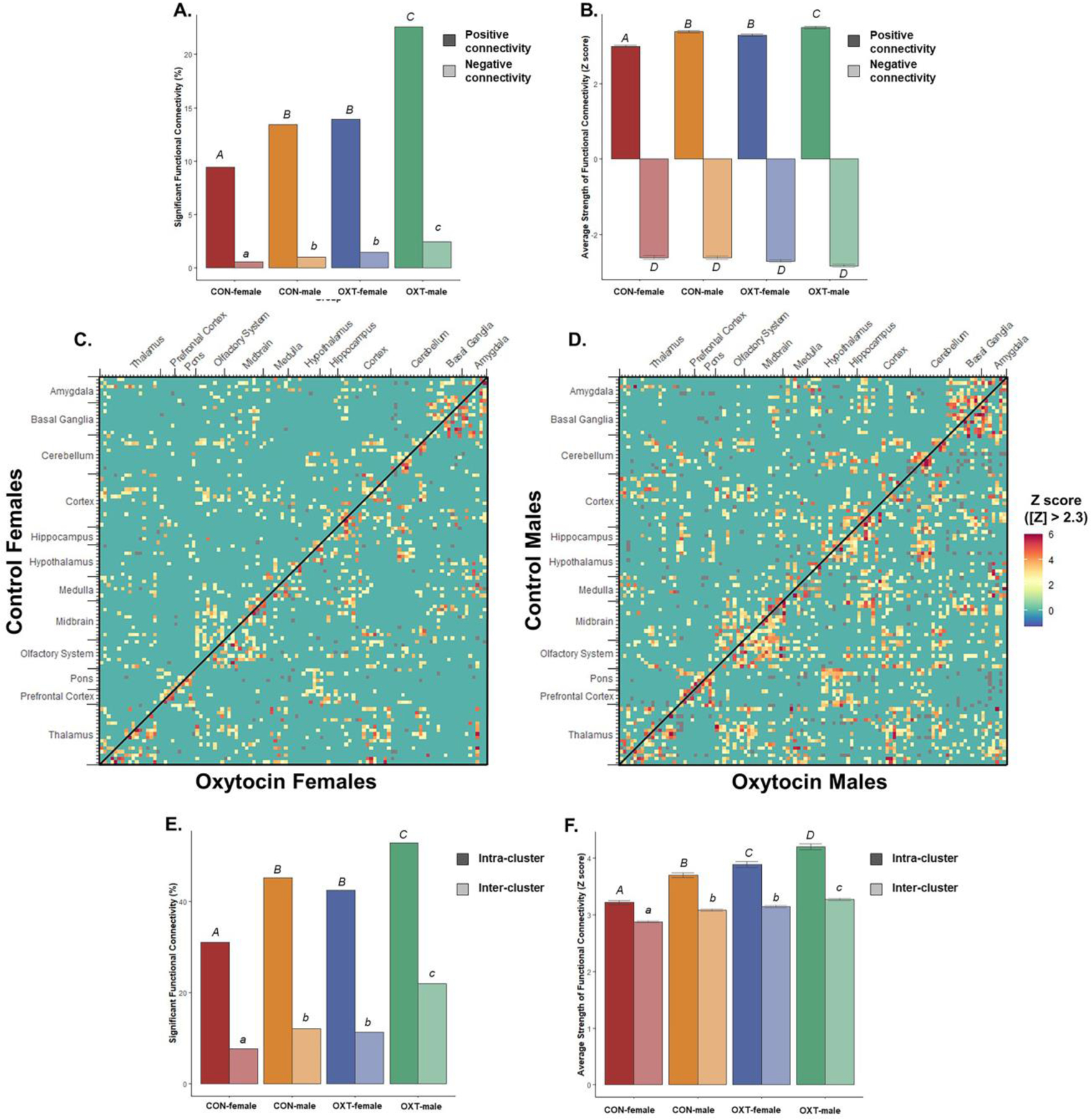Figure 4.

Resting-state functional connectivity from 111 brain regions. (A) Both OXT treatment and male sex increased functional connectivity, meaning OXT-exposed males had the greatest proportion of region-region pairs significantly functionally connected for both positive (dark fill) and negative (light fill) correlations. Significant group differences are indicated with different letters over top the bars. (B) The average strength of correlation among region-region pairs whose activity was significantly correlated. Both OXT treatment and male sex increased the strength of connectivity for positive connections (dark fill). There were no significant differences among negative connections (light fill). (C) Both OXT treatment and male sex increased the strength of connectivity among both intra- and inter-cluster, though intra-cluster connectivity was more sensitive to these effects. Significant group differences are indicated with different letters over top the bars. In panels (D) and (E), connectivity from males and females respectively, 111x111 cell matrices show the strength of connectivity for all possible pairs of brain regions. Reflected across the diagonal are opposing treatment conditions, with OXT on top and Control on bottom. Region-region pairs whose connectivity Z score was less than |2.3| were excluded.
